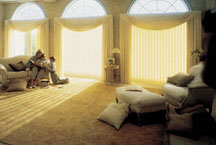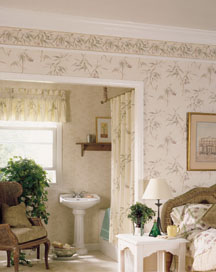
The floor covering retailer of the latest century faces the same challenge as his counterpart in the last: How to attract consumers, then keep them coming back for more. And while better customer service, more pricing options, and a keener ear for consumer concerns and needs helped unlock the doors for many new entrepreneurs, the key to keeping those doors open may lie in expanding product lines past the traditional and into the additional.
One oft-ignored add-on segment that has bolstered profit margins for many retailers lies not on the floor, but above it. Window coverings and fashions comprise a multi-billion-dollar industry segment that has a natural design relationship with floor coverings, but is often relegated to non-industry status. Believing that window accoutrements and floor covering materials are selected without thought or concern for one another leaves rationale, as well as money, on the table. And because the purchase decision for one often weighs on the other, having both products available in one location makes sense, both logically and financially.
"The floor covering retailer is the largest channel for aggressive growth that we have at this moment," notes Joe Jankoski, corporate vice president of merchandising for Hunter Douglas. "We're still amazed that many haven't yet come on board, but those that have are having great success."

Retail prices for highAs is the case with all Hunter Douglas lines, higher-end window fashions can run to four figures and beyond. They are custom manufactured to fit the exact measurements of each individual window. Most manufacturers stress the importance of the custom manufacturing process in ensuring customer satisfaction; consumers can enter the store, make their decision, and leave knowing that their needs will be addressed in a personal, professional manner.
This approach allows a certain freedom for the retailer as well. While the addition of many product segments entails the warehousing of new inventory, a window fashion profit center does not. Inventory needs are limited to the number of samples and displays the retailer maintains in the showroom for the customer to peruse. And with continuing advances in the sophistication of design software and imaging tools, the space required to house the displays continues to shrink, freeing up more room on the floor for other needs.
To compete in an ever-changing world of tastes, Brewster Wallcovering Co., a Massachusetts-based producer and distributor of valences, wallpaper, fabrics and accessories, uses intense market research and the newest CAD technology to aid its staff in creating the latest contemporary accessories for consumers to choose from, while keeping pace in a competitive marketplace.

Diversification can make all the difference. A self-described "wholesale to the trade" manufacturer of custom window fashions - including wood blinds, vinyl shutters, and PVC and fabric verticals - Skandia Window Fashions has partnered with numerous furniture, drapery, floor covering, and wallpaper retailers across the United States, as well as with interior designers, cleaning services, and other peripheral industries. The ability to fit the needs of a variety of business segments benefits everyone, from the manufacturer to the consumer.
It is the retailer who stands to benefit the most. By expanding on traditional thinking and embracing non-traditional product segments, floor covering retailers can solidify and diversify their business in what has now become an uncertain economic environment, while at the same time opening the door to new financial opportunities and a previously untapped clientele.
In the 1990s, window and wall covering manufacturers began stepping up their presence at trade shows and exhibitions usually reserved for the floor covering industry. During Surfaces 2001, Hunter Douglas will be located at booth 11064; Brewster Wallcovering Co., booth 21301; and Skandia Window Fashions, booth 8318.

Report Abusive Comment